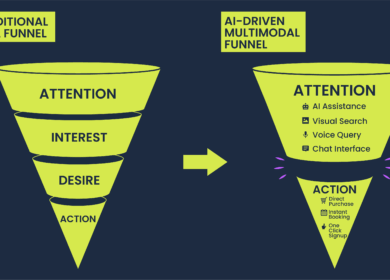The chaotic rollout of X is the perfect reminder of the value of a sober communication strategy.

Corporate rebrands are invariably controversial affairs. New names and logos cannot hope to be universally popular among customers, and especially fans, of a well-established brand. They are also almost guaranteed to attract mockery from pundits.
The metamorphosis of self-respecting Facebookers into “Metamates”, for instance, was never going to be a smooth ride internally or in the media. But the furor was short-lived, and the Meta brand is now just part of the fabric of the corporate world, even if the metaverse isn’t. Crucially, for consumers, the familiar Facebook name lives on.
Yet even as the dust settles, Twitter’s abrupt conversion to X seems jarring in a way that most rebrands are not.
Ditching the distinctive blue bird for what looks like a Unicode glyph symbolically puts paid to a brand that has built up billions of dollars’ worth of value over a 15-year period. It looks like an act of self-sabotage: the final hollowing-out of a company that had already lost about two-thirds of its value since Elon Musk acquired it in October 2022.
An important differentiator between the Twitter/X fiasco and more conventional tech rebrands is the level of planning. Most — well, at least many — organizations work to build a coherent narrative and factor in the direction things will take post-announcement. They also anticipate the questions and concerns of different audiences, from users to advertisers. (Twitter has seen advertising revenue plummet by around half since Musk bought it, and the haphazard rebranding is unlikely to help restore it.)
Musk prefers to keep everyone guessing as to what his, and the company’s, next moves will be — partly in the name of mischievous drama and partly because he probably hasn’t figured them out. He explained the new name away with the vague intention of creating an “everything app” along the lines of WeChat. What it will look like, when and indeed whether it will materialize is all open to endless speculation.
Another off-key factor, apart from the short-lived flashing ‘X’ sign on the former Twitter building, is the way the rebrand was announced.
Why did Musk not give the limelight to the company’s CEO, Linda Yaccarino? Dominating the announcement himself undermined the new leader and suggests that she will have little say in the company’s direction.
Yaccarino’s own word salad of a tweet around the launch of X gives the impression that she is as much in the dark about its specifics as everyone else. And as at all of Musk’s companies, he seems unable to decouple himself from the brand. Given his impetuous nature, this inability to step back puts all stakeholders at risk.
Musk’s distaste for organized communications and professional communicators is well known, and his apparent philosophy that all publicity is good publicity has not killed him. The question to ask now is, how long can his run of luck continue? An easy answer is: as long as his money lasts. Which is likely to be a long time. All the same, sparring with anti-hate speech groups, as opposed to focusing on developing quality products, is the sort of thing that erodes goodwill. And a company with problems as big as X badly needs a sense of succession planning to reassure people at every step of its rehabilitation journey; a measured, long-term communications strategy rather than sporadic, reactionary outbursts.
Spontaneity has a place in marketing communications, but an effective guiding strategy it isn’t.
As the world’s richest person, it’s unsurprising that Musk emboldens lesser mortals to adopt a more off-the-cuff style. Leaders and communicators may want to catch themselves before following in his footsteps.
Being “real” should not mean abandoning planning and thoughtfulness. Speed is desirable, but not at all costs. If an idea — or indeed a new brand identity — is half-baked, hold off announcing it. Compare the rebranding of Twitter with the impeccably timed, orderly launch of Threads. While usually far from a model communicator, Zuckerberg introduced the app with good humor, clearly and credibly presenting it as a more responsible alternative to Twitter, drawing 100 million signups in five days. Granted, Threads’ momentum is already slowing, and Musk’s X may yet triumph. He will certainly continue being his mercurial self. But for everyone who is not Elon Musk, Zuckerberg’s delivery sets a far better precedent to follow. All leadership behavior should aim to add value rather than simply add to the noise. In a world where people increasingly swing to extremes there’s a lot to be said for the moderation that a well-planned communications framework can bring. At its best, PR and marketing strategy strikes a balance between planned and spontaneous action, giving spokespeople and brands a solid middle ground that won’t crumble as they stand on it.

